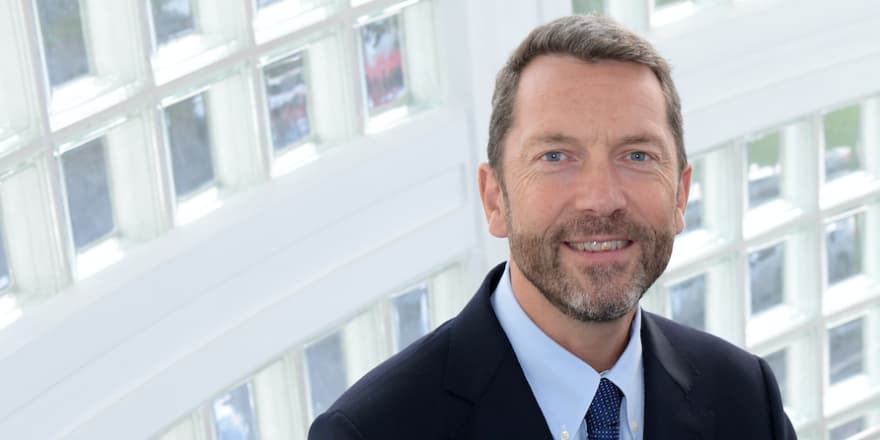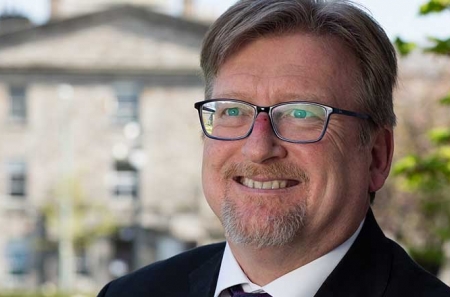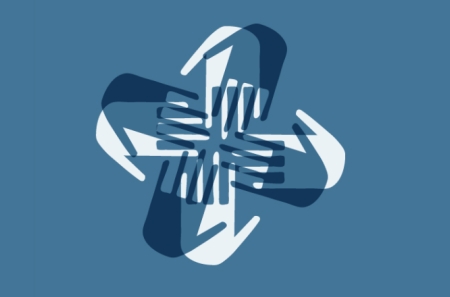
Richard Reilly MRIA: Neuroscientist
07 December 2020Professor Reilly's career has been driven by his fascination with neurology coupled with his original background in electronic engineering to the emerging field of neuroscience to explore issues of clinical importance.
Richard Reilly MRIA, Professor of Neural Engineering, Centre for Biomedical Engineering, Trinity College Dublin
My career has been driven by my fascination with neurology. I have coupled my original background in electronic engineering to the emerging field of neuroscience to explore issues of clinical importance.
As Professor of Neural Engineering, a discipline within biomedical engineering that draws on the fields of electrophysiology, clinical neurology, experimental neuroscience and electronic engineering, my research focus is on how sensory and movement impairments may affect cognitive and physical function. The aim is to enhance our understanding of the mechanisms of and potential interventions for optimising cognitive health and physical function. My research therefore spans disciplinary areas from biomedical engineering to neurology, neurophysiology, audiology and gerontology. My lab is a constituent laboratory of the Trinity Centre of Biomedical Engineering and the Trinity Institute of Neuroscience at Trinity College Dublin.
My research team develops signal-processing methods to extract information from electro-physiological data, and we use quantitative methods to understand neurological function. This approach allows my lab to aid clinical diagnosis and also to create neural prosthetics and neuromodulation devices. We also develop analytical and neuroimaging methods to assess the outcomes of clinical interventions. In the lab we are particularly interested in understanding how the brain processes sensory information in specific movement disorders: Dystonia and Parkinson’s disease. We have been generating experimental evidence that adult-onset Dystonia is associated with structural and neurophysiological changes considered to reflect defective inhibitory processing within a network that includes the superior colliculus, a brain circuit for the transformation of sensory input into movement output, along with the basal ganglia, and the primary somatosensory cortex.
We also work with active implantable devices, such as cochlear implants. We have developed signal-processing methods to quantify objectively how cochlear implant users process temporal and spectral acoustic information. This is essential clinical information to ensure the devices are perfectly tuned to the individual. Given the importance of translating ideas out of the lab, we have patented some of these research methods and licensed them to the medical-device industry.
We have also contributed to advanced quantitative methods for clinical decision-making concerning respiratory medicine. Our work in this area has focused on objective methods for measuring patient adherence to medication and the effect of pharmaceutical interventions. We have developed new acoustics methods to monitor longitudinally patient adherence and drug deposition, and to estimate respiratory function. We have patented some research outputs in this area too, and licensed the methods to the medical-device industry.
Another example of the practical aspect of the work in our lab is the development of technologies for objectively managing chronic disease and disease processes associated with ageing. Identifying early markers of cognitive impairment is paramount in order to implement potential prevention strategies and to inform patient management. Gait is a complex process known to involve several key brain regions involved in decision-making, processing speed, and cognitive flexibility. A simple gait assessment has the potential to screen quickly for cognitive decline. Developments in gait-assessment sensor technology have enabled convenient, brief, and objective measurements of many aspects of gait performance. We are developing analytical methods based on gait, acquired from sensor data, to detect subtle changes in cognitive function in a range of clinical cohorts.
As mentioned, we typically have multidisciplinary teams of neurologists, neurophysiologists, neuroscientists and neural engineers working together on our research projects. My research has only been possible because of very productive working relationships with excellent clinical colleagues at St Vincent’s University Hospital, the Mater Hospital, Beaumont Hospital, St James’s Hospital and Tallaght University Hospital. The willingness of volunteers to carry out our experiments is also fundamental, and we are always grateful to them for giving of their time so generously. We have a network of active clinical and neural engineering collaborations with colleagues in Australia, Denmark, France, Germany, Israel, Italy, Japan, the Netherlands, Spain, the UK and the US.
The European Scientific Advice Mechanism (SAM), working with a European Commission group of chief scientific advisors and the European Academies (SAPEA), provides independent and transparent scientific advice to the European Commission. In 2019, I co-edited, along with my colleague Rose Anne Kenny MRIA and two other colleagues in Europe, a report written for the SAM, titled Transforming the future of ageing. This evidence-review report examines how public health programmes aimed at protecting and improving the health of people and their communities can improve the prospects of current and future ageing EU citizens. In 2016 there were 98 million people in the EU aged 65 years or older, compared with 80 million children aged under 16 years. Taking into consideration that the life expectancy of the next generation of older adults is likely to surpass that of their parents, it becomes necessary to foresee and plan for the challenges that they will face. Technology will play an increasing role in promoting healthy lifestyles and will also revolutionise care-delivery systems.
I am also involved in many additional science-related activities. I am a member of the board of the Health Products Regulatory Authority (www.hpra.ie) and chair of the HPRA’s Medical Devices Advisory Committee. I am a member of the board of the National Rehabilitation Hospital (www.nrh.ie) and a director of the Irish Institute of Clinical Neuroscience (www.iicn.ie). I am also a member of the editorial boards of several scientific journals, and am associate editor of the IEEE Journal of Translational Engineering in Health and Medicine, which has the same ethos as my lab and publishes work in the intersection of engineering and clinical translation.
Read other Member Research Series articles



